-
Product Name
UHRF2 Polyclonal Antibody
- Documents
-
Description
Polyclonal antibody to UHRF2
-
Tested applications
WB, IHC, IF
-
Species reactivity
Human, Mouse, Rat
-
Alternative names
UHRF2 antibody; NIRF antibody; RNF107 antibody; TDRD23 antibody; URF2 antibody; E3 ubiquitin-protein ligase UHRF2 antibody
-
Isotype
Rabbit IgG
-
Preparation
Antigen: Recombinant fusion protein containing a sequence corresponding to amino acids 441-622 of human UHRF2 (NP_690856.1).
-
Clonality
Polyclonal
-
Formulation
PBS with 0.02% sodium azide, 50% glycerol, pH7.3.
-
Storage instructions
Store at -20℃. Avoid freeze / thaw cycles.
-
Applications
WB 1:500 - 1:2000
IHC 1:50 - 1:200
IF 1:50 - 1:200 -
Validations
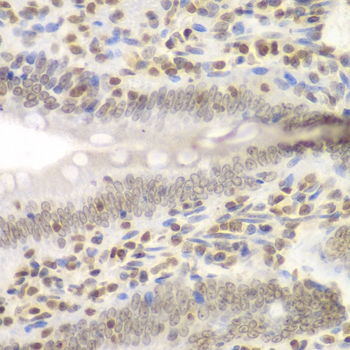
Immunohistochemistry - UHRF2 Polyclonal Antibody
Immunohistochemistry of paraffin-embedded rat Intestine using UHRF2 antibody at dilution of 1:200 (40x lens).
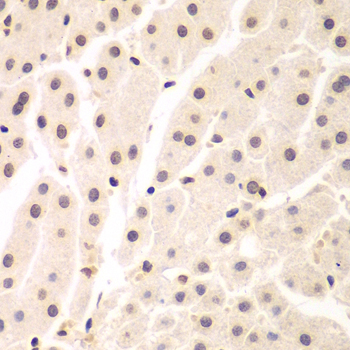
Immunohistochemistry - UHRF2 Polyclonal Antibody
Immunohistochemistry of paraffin-embedded human liver cancer using UHRF2 antibody at dilution of 1:200 (40x lens).
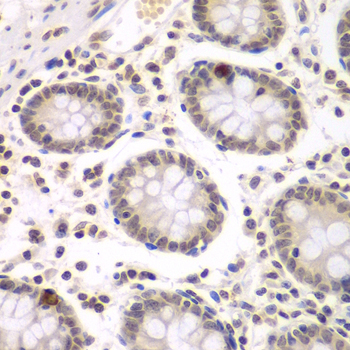
Immunohistochemistry - UHRF2 Polyclonal Antibody
Immunohistochemistry of paraffin-embedded human colon using UHRF2 antibody at dilution of 1:200 (40x lens).
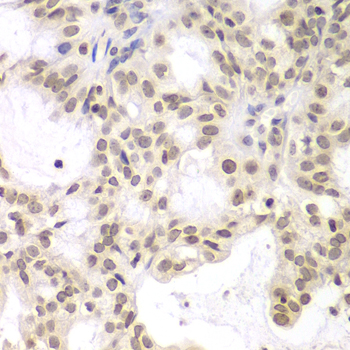
Immunohistochemistry - UHRF2 Polyclonal Antibody
Immunohistochemistry of paraffin-embedded human oophoroma using UHRF2 antibody at dilution of 1:200 (40x lens).
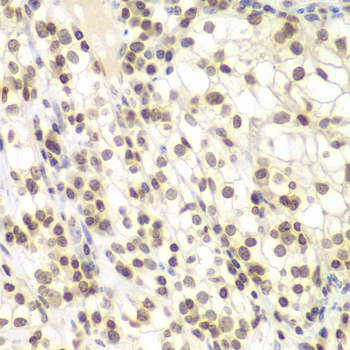
Immunohistochemistry - UHRF2 Polyclonal Antibody
Immunohistochemistry of paraffin-embedded human kidney cancer using UHRF2 antibody at dilution of 1:200 (40x lens).
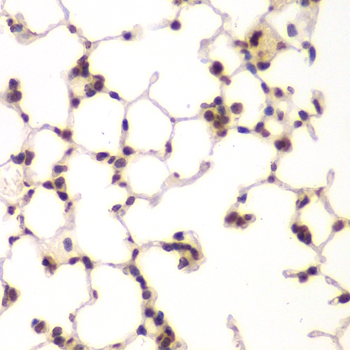
Immunohistochemistry - UHRF2 Polyclonal Antibody
Immunohistochemistry of paraffin-embedded mouse lung using UHRF2 antibody at dilution of 1:200 (40x lens).
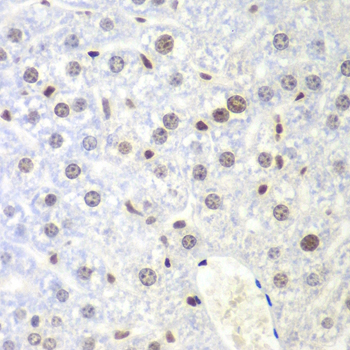
Immunohistochemistry - UHRF2 Polyclonal Antibody
Immunohistochemistry of paraffin-embedded mouse liver using UHRF2 antibody at dilution of 1:200 (40x lens).
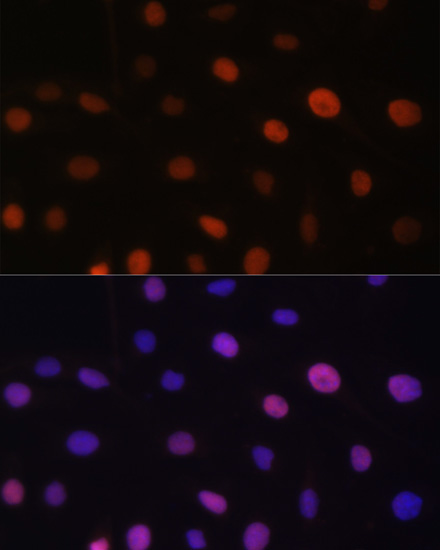
Immunofluorescence - UHRF2 Polyclonal Antibody
Immunofluorescence analysis of U-2 OS cells using UHRF2 antibody at dilution of 1:100. Blue: DAPI for nuclear staining.
-
Background
E3 ubiquitin-protein ligase that is an intermolecular hub protein in the cell cycle network. Through cooperative DNA and histone binding, may contribute to a tighter epigenetic control of gene expression in differentiated cells. Ubiquitinates cyclins, CCND1 and CCNE1, in an apparently phosphorylation-independent manner and induces G1 arrest. Also ubiquitinates PCNP leading to its degradation by the proteasome. E3 SUMO-, but not ubiquitin-, protein ligase for ZNF131.
Related Products / Services
Please note: All products are "FOR RESEARCH USE ONLY AND ARE NOT INTENDED FOR DIAGNOSTIC OR THERAPEUTIC USE"
